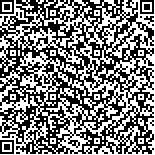| Quote
: |
祁芳,李艳玲,艾坤,蔡雄,李鑫,刘梨,杨茜芸.电针对佐剂性关节炎大鼠踝关节滑膜细胞胞浆内IκB磷酸化的影响[J].湖南中医药大学学报英文版,2020,40(12):1494-1498.[Click to copy
] |
|
| |
|
|
| This paper
:Browser 3320times Download 1765times |
| 电针对佐剂性关节炎大鼠踝关节滑膜细胞胞浆内IκB磷酸化的影响 |
| 祁芳,李艳玲,艾坤,蔡雄,李鑫,刘梨,杨茜芸 |
| (湖南中医药大学, 湖南 长沙 410208;湖南中医药大学第一附属医院, 湖南 长沙 410007) |
| 摘要: |
| 目的 探讨电针足三里、关元穴对佐剂性关节炎(adjuvant arthritis,AA)大鼠踝关节滑膜细胞胞浆内核因子κB(nuclear factor kappa-B,NF-κB)的抑制蛋白IκB磷酸化的影响。方法 将60只SD大鼠随机分为正常组、模型组、甲氨蝶呤组(MTX组)、电针组,每组15只。模型组、MTX组和电针组大鼠均于尾根部皮下注入完全弗氏佐剂复制AA模型。自造模后第1天开始,MTX组大鼠予以0.35 mg/kg剂量的MTX灌胃治疗,电针组大鼠每日予以电针关元、双侧足三里、阿是穴,共治疗3周,正常组和模型组正常饲养不作干预。治疗过程中每3天行1次体质量、足爪容积、关节炎指数测评;实验结束后对各组大鼠踝关节行HE染色切片,并运用Western blot法分别检测大鼠踝关节滑膜细胞胞浆内IκB磷酸化水平及其重要相关蛋白NF-κB的含量。结果 与正常组比较,模型组大鼠踝关节滑膜细胞胞浆内IκB磷酸化水平显著升高(P<0.01),细胞核内NF-κB的含量显著升高(P<0.01);与模型组比较,电针组踝关节滑膜细胞胞浆内IκB磷酸化水平低于模型组(P<0.05),细胞核内NF-κB的含量显著降低(P<0.01)。结论 电针AA大鼠能够有效抗炎,其抗炎机制可能与抑制关节滑膜细胞胞浆内IκB磷酸化,从而良性调控NF-κB炎症信号通路有关。 |
| 关键词: 佐剂性关节炎 电针 IκB磷酸化 关元 足三里 阿是穴 |
| DOI:10.3969/j.issn.1674-070X.2020.12.011 |
| Received:August 15, 2020 |
| 基金项目:国家自然科学基金青年基金项目(81303048);国家自然科学基金面上项目(82074565);湖南省科技厅科技计划一般项目(2014SK3046);湖南省教育厅科学研究优秀青年项目(15B176);湖南省教育厅科学研究项目(14C0854)。 |
|
| Effects of Electroacupuncture on IκB Phosphorylation in Synovial Cell Cytoplasm of Adjuvant Arthritis Rats' Ankles |
| QI Fang,LI Yanling,AI Kun,CAI Xiong,LI Xin,LIU Li,YANG Qianyun |
| (Hunan University of Chinese Medicine, Changsha, Hunan 410208, China;The First Hospital of Hunan University of Chinese Medicine, Changsha, Hunan 410007, China) |
| Abstract: |
| Objective To explore effects of electroacupuncture at Zusanli (ST36) and Guanyuan (RN4) on phosphorylation of IκB, which is an inhibitor of nuclear factor-Kappa B (NF-κB) in synovial cell cytoplasm of adjuvant arthritis (AA) rats' ankles. Methods A total of 60 SD rats were randomly assigned into a normal group, a model group, a methotrexate (MTX) group and an electroacupuncture group, with 15 rats in each group. Rats in the model group, the MTX group and the electroacupuncture group were injected with complete Freund's adjuvant subcutaneously into roots of tails to replicate AA models. From the first day after the modeling, rats in the MTX group were treated with 0.35 mg/kg MTX by gavage, and rats in the electroacupuncture group were given electroacupuncture at Guanyuan (RN4), bilateral Zusanli (ST36) and Ashi points for 3 weeks. The normal group and the model group were fed normally without intervention. Body mass, paw volume and arthritis indexes were evaluated every 3 days during the treatment. After the experiment, HE staining sections were performed on the rats' ankles in each group, and levels of IκB phosphorylation in the synovial cell cytoplasm of the rats' ankles and contents of the important relevant protein NF-κB in the 4 groups were detected by the Western blot (WB) method. Results Compared with the normal group, the level of IκB phosphorylation in the synovial cell cytoplasm of the rats' ankles in the model group was significantly increased (P<0.01), and the content of NF-κB in the cell nucleus was significantly increased (P<0.01). Compared with the model group, the level of IκB phosphorylation in the synovial cell cytoplasm of the rats' ankles in the electroacupuncture group was lower than that in the model group (P<0.05), and the content of NF-κB in the cell nucleus was significantly decreased (P<0.01). Conclusion Electroacupuncture in AA rats is effectively anti-inflammatory, and its anti-inflammatory mechanism may be related to inhibiting the phosphorylation of IκB in the cytoplasm of joint synovial cells, thereby performing benign regulation on the NF-κB inflammatory signaling pathway. |
| Key words: adjuvant arthritis electroacupuncture IκB phosphorylation Guanyuan (RN4) Zusanli (ST36) Ashi point |
|

二维码(扫一下试试看!) |
|
|
|
|


